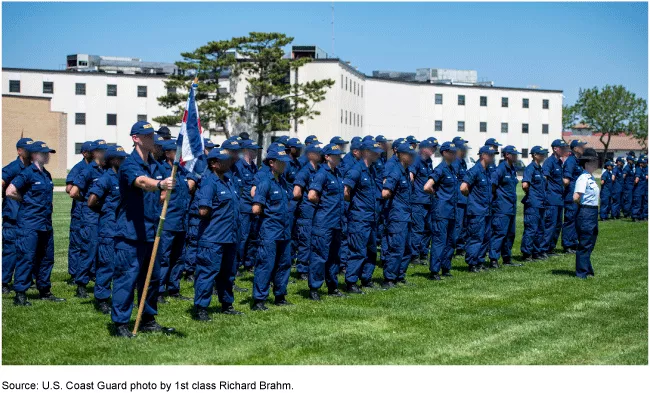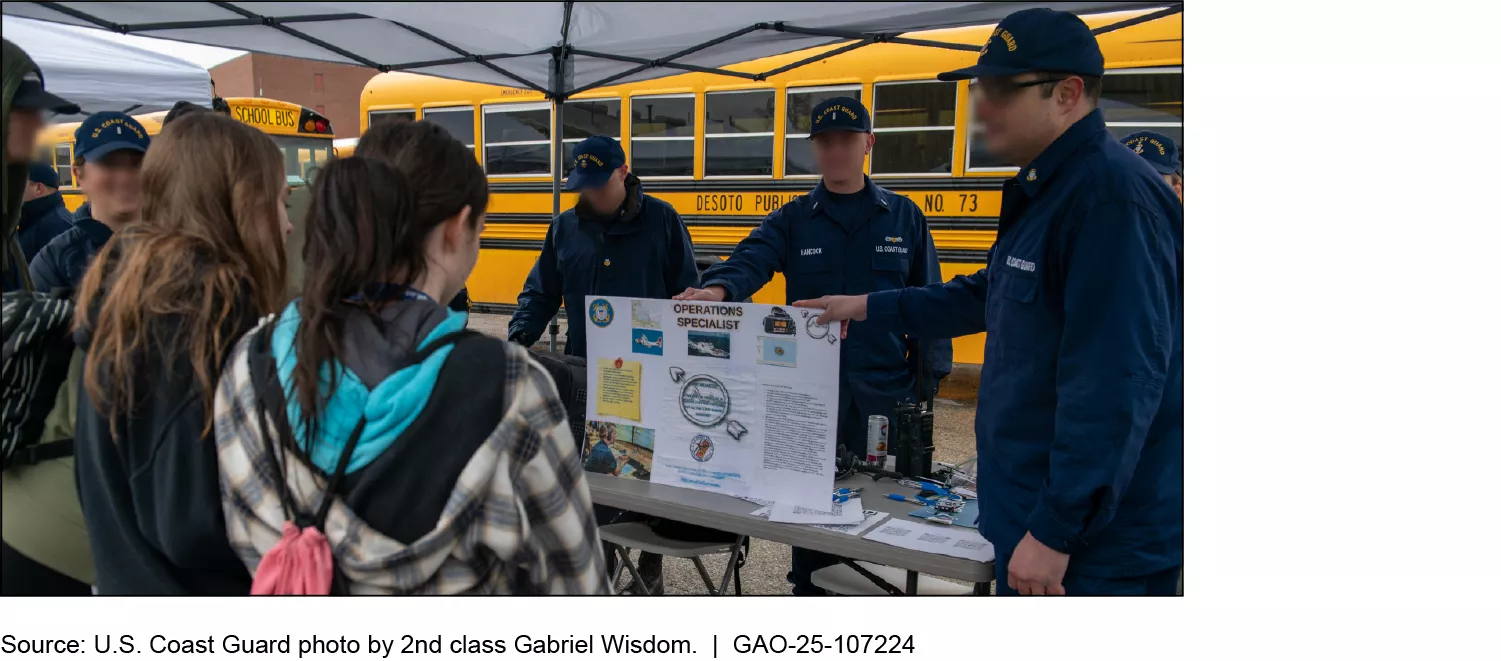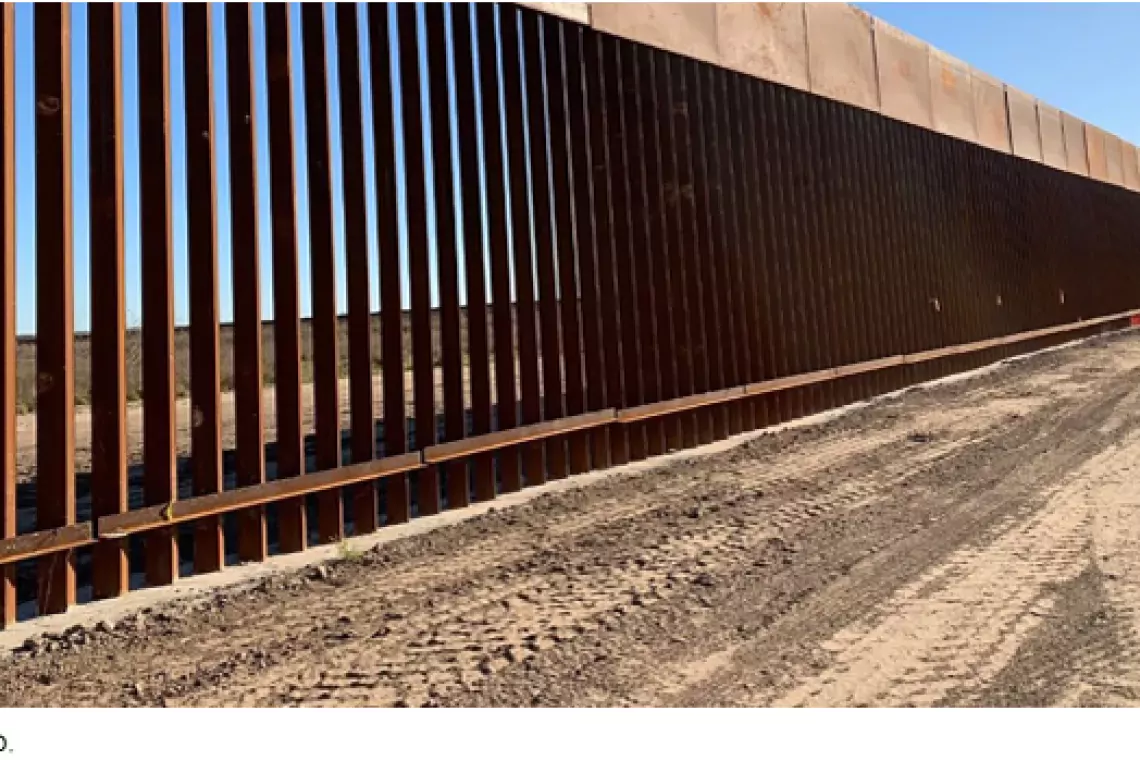U.S. Coast Guard Left Short Staffed Amidst Recruitment and Retention Challenges
In recent years, the U.S. Coast Guard has lost more enlisted service members than it has recruited. This has left the Coast Guard short about 2,600 active-duty staff and operating below the workforce level it thinks necessary to meet mission needs.
Today’s WatchBlog post looks at our two new reports on what the Coast Guard is doing to recruit new service members and retain those it currently has.
Coast Guard Recruits at the Cape May Training Center
Image

A workforce battle on two fronts
The Coast Guard has fallen short of its recruiting goals for 5 of the last 6 fiscal years.
According to Coast Guard officials, young people are less interested in military service and may pursue higher paying jobs in the private sector. And fewer Americans are able to meet the requirements to serve in the Coast Guard. For example, only about 25% of Americans between the ages of 17 and 24 can meet requirements for education, medical eligibility, and physical fitness standards.
If you can’t recruit, you must retain staff. But the Coast Guard has also struggled with retention. During the last 6 fiscal years, it has missed retention targets. As a result, the Coast Guard lost more enlisted service members than it gained.
We asked service members about why they are leaving the Coast Guard. They gave us 4 major reasons:
- Rotations and support services. Frequent moves made it difficult to find housing, health care, and child care.
- Work environment and culture. Heavy workloads, command leadership, and physical and technical infrastructure issues hurt morale and affected retention.
- Compensation and career advancement. Compensation packages in the service don’t compete with the private sector. And service members struggled with limited opportunities for advancement.
- Retention incentives and retirement benefits. A new retirement system made it easier to leave the service early. This combined with minimal retention incentives for senior service members may contribute to earlier retirements.
With lower recruitment and retention numbers, the Coast Guard has needed to temporarily close some stations and decommission ships and patrol boats earlier than planned.
Incentives to join, incentives to stay
The Coast Guard is working to address recruiting and retention by improving incentives. For example, the Coast Guard has established active-duty enlistment bonuses to help with recruitment. These range from $2,000 for those with prior military service to $15,000 for those with 120 or more college credits. Those with specific training or skills may be eligible for bonuses up to $75,000.
The Coast Guard has taken a similar strategy with retention. Bonuses are being offered to keep staff with certain skills or specialties. The Coast Guard also offers nonmonetary incentives, such as guaranteed training that can increase opportunities for advancement.
But offering incentives isn’t the only action the Coast Guard is taking. It has also updated enlistment eligibility criteria—raising the maximum age limit, lowering testing score requirements, and more. The Coast Guard has also opened new recruiting offices, increased its marketing budget, and expanded outreach efforts.
Image

Thus far, the Coast Guard has not fully evaluated how each of these efforts has contributed to recruiting results and lacks information on which issues most affect retention. These limited incentives may not be enough to balance the challenges service members face.
How well are the Coast Guard’s efforts working?
The Coast Guard has not evaluated how its recruitment efforts have contributed to its recruitment goals. Taking this step is important. The Coast Guard has limited funding and personnel available to support its recruiting efforts. So, knowing which efforts have the most benefit is critical. In our new report, we recommended the Coast Guard do more to assess its recruiting efforts.
Similarly, the Coast Guard could use more information about why service members are leaving. The Coast Guard surveys members at key points in their careers, such as when they leave the service or reenlist, but it gets limited responses. Without more responses, the Coast Guard may not know what actions are needed to retain staff. We recommended steps to improve the response rate.
Learn more about the Coast Guard’s recruitment and retention efforts by checking out our new reports. To see the Coast Guard’s recruiting website, you can visit www.gocoastguard.com.
- GAO’s fact-based, nonpartisan information helps Congress and federal agencies improve government. The WatchBlog lets us contextualize GAO’s work a little more for the public. Check out more of our posts at GAO.gov/blog.
- Got a comment, question? Email us at blog@gao.gov.
GAO Contacts
Related Products

GAO's mission is to provide Congress with fact-based, nonpartisan information that can help improve federal government performance and ensure accountability for the benefit of the American people. GAO launched its WatchBlog in January, 2014, as part of its continuing effort to reach its audiences—Congress and the American people—where they are currently looking for information.
The blog format allows GAO to provide a little more context about its work than it can offer on its other social media platforms. Posts will tie GAO work to current events and the news; show how GAO’s work is affecting agencies or legislation; highlight reports, testimonies, and issue areas where GAO does work; and provide information about GAO itself, among other things.
Please send any feedback on GAO's WatchBlog to blog@gao.gov.




